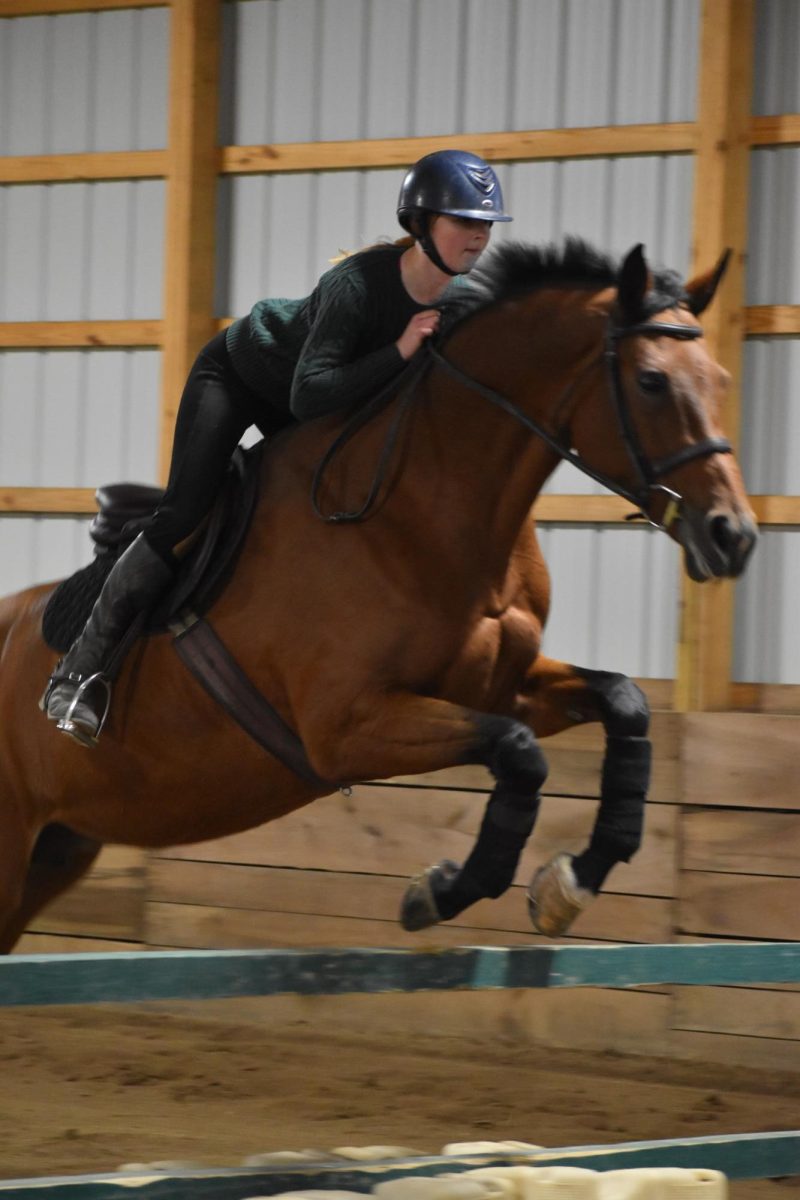With the first nine weeks well underway, students can assume that teachers will have already conducted a thorough background check on their academic performance, perhaps even more so than in previous years. Starting this year, teachers are required to sort students into three categories of preparedness: low, middle or high. This is a component of the freshly implemented RISE system, which bases a portion of teachers’ pay on student performance.
According to English teacher Amanda Richmond, evidence of a student’s preparedness is drawn from prior academic achievements, and that’s not always easy to do.
“Right now, that’s kind of what we’re playing with, is trying to figure out how many things we can use and what’s at our disposal to try and figure out high and middle and low preparedness,” she said.
The Student Learning Objectives Handbook, which is a handbook that outlines RISE guidelines, states that teachers may look at cumulative GPA, class selection, prior year tests and pretests as long as it pertains to the class they are teaching. After this data has been collected, teachers will create a portfolio and review their evaluations and objectives with an administrator.
Principal John Williams said one of the reasons why teachers are assessing their students is so that a student’s improvement may be appropriately measured throughout the year.
“The teachers are asked in one of their classes to set a learning objective…and it has to be tied in to the end-of-course assessment,” he said. “In order for that goal to be realistic, (teachers) have to have some idea of what the make-up of the class is.”
Not only will this system allow teachers to track a student’s progress, but it may lead to more effective teaching. According to Assistant Principal Brooke Watkins, this categorization forces teachers to look at each student individually.
“The more you know, the better equipped you are to address any areas of concern or things where students need help. We’re being asked to be more mindful and specific about knowing where our students (are) as learners,” she said.
Junior Rachel Dowley said she agrees that the new requirement will cause teachers to focus more attention on a student’s explicit needs.
“It could help teachers take a lot more responsibility for their kids because I feel like in the past, teachers could simply write somebody off as a bad student, except now they could take more initiative to help them,” she said.
Although students will be assessed in each class, they will not be privy to the levels assigned to them. In addition, teaching methods and treatment toward students will remain the same.
Richmond said, “We aren’t categorizing kids so that kids may know what level that they fall in, so I don’t think that they will ever feel like, ‘Oh, I’m a low performer, so I have to increase more than anybody else.’”
Watkins said assessing the amount of preparation for a course is not synonymous with ranking students. “We’re not giving a hierarchy of where students are; we’re just looking at where their skill sets are,” she said. “We all have strengths and weaknesses.”
Although the evaluation process will require a lot of time and data collection for both teachers and administrators, there may not be a noticeable change in the classroom.
Dowley said, “I feel like in a school like Carmel, it really won’t change much…I feel like the teachers at this school really already do take a lot of responsibility for their students, so this is just going to solidify a checks-and-balances.”


































![British royalty are American celebrities [opinion]](https://hilite.org/wp-content/uploads/2024/03/Screenshot-2024-03-24-1.44.57-PM.png)



















![Chelsea Meng on her instagram-run bracelet shop [Biz Buzz]](https://hilite.org/wp-content/uploads/2024/04/IMG_2446-1200x838.jpg)
![Review: Quiet on Set: The Dark Side of Kids TV is the long awaited exposé of pedophilia within the children’s entertainment industry [MUSE]](https://hilite.org/wp-content/uploads/2024/04/unnamed.jpg)
![Review: “The Iron Claw” cannot get enough praise [MUSE]](https://hilite.org/wp-content/uploads/2024/04/unnamed.png)
![Review: “The Bear” sets an unbelievably high bar for future comedy shows [MUSE]](https://hilite.org/wp-content/uploads/2024/03/unnamed.png)
![Review: “Mysterious Lotus Casebook” is an amazing historical Chinese drama [MUSE]](https://hilite.org/wp-content/uploads/2024/03/0.webp)
![Review in Print: Maripaz Villar brings a delightfully unique style to the world of WEBTOON [MUSE]](https://hilite.org/wp-content/uploads/2023/12/maripazcover-1200x960.jpg)
![Review: “The Sword of Kaigen” is a masterpiece [MUSE]](https://hilite.org/wp-content/uploads/2023/11/Screenshot-2023-11-26-201051.png)
![Review: Gateron Oil Kings, great linear switches, okay price [MUSE]](https://hilite.org/wp-content/uploads/2023/11/Screenshot-2023-11-26-200553.png)
![Review: “A Haunting in Venice” is a significant improvement from other Agatha Christie adaptations [MUSE]](https://hilite.org/wp-content/uploads/2023/11/e7ee2938a6d422669771bce6d8088521.jpg)
![Review: A Thanksgiving story from elementary school, still just as interesting [MUSE]](https://hilite.org/wp-content/uploads/2023/11/Screenshot-2023-11-26-195514-987x1200.png)
![Review: When I Fly Towards You, cute, uplifting youth drama [MUSE]](https://hilite.org/wp-content/uploads/2023/09/When-I-Fly-Towards-You-Chinese-drama.png)
![Postcards from Muse: Hawaii Travel Diary [MUSE]](https://hilite.org/wp-content/uploads/2023/09/My-project-1-1200x1200.jpg)
![Review: Ladybug & Cat Noir: The Movie, departure from original show [MUSE]](https://hilite.org/wp-content/uploads/2023/09/Ladybug__Cat_Noir_-_The_Movie_poster.jpg)
![Review in Print: Hidden Love is the cute, uplifting drama everyone needs [MUSE]](https://hilite.org/wp-content/uploads/2023/09/hiddenlovecover-e1693597208225-1030x1200.png)
![Review in Print: Heartstopper is the heartwarming queer romance we all need [MUSE]](https://hilite.org/wp-content/uploads/2023/08/museheartstoppercover-1200x654.png)























![Review: Ladybug & Cat Noir: The Movie, departure from original show [MUSE]](https://hilite.org/wp-content/uploads/2023/09/Ladybug__Cat_Noir_-_The_Movie_poster-221x300.jpg)

![Review: Next in Fashion season two survives changes, becomes a valuable pop culture artifact [MUSE]](https://hilite.org/wp-content/uploads/2023/03/Screen-Shot-2023-03-09-at-11.05.05-AM-300x214.png)
![Review: Is The Stormlight Archive worth it? [MUSE]](https://hilite.org/wp-content/uploads/2023/10/unnamed-1-184x300.png)



